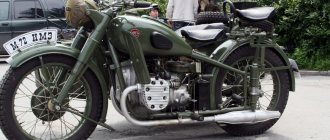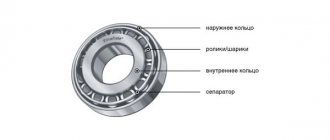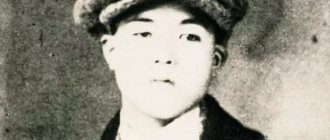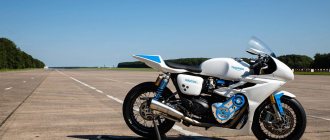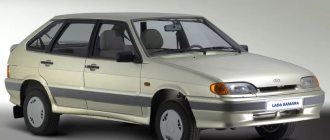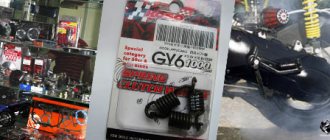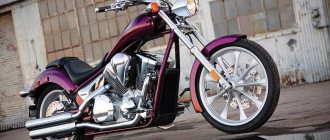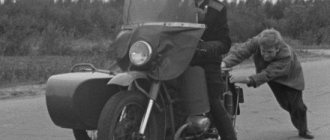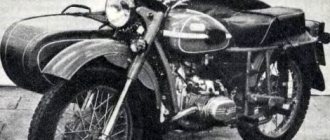The subculture “bikers” can only be fully understood by ordinary people who have nothing in common with the corresponding people and motorcycles if one dives deep into its history. It all started in 1868, when the era of motorized bicycles had just begun. Since people have always been drawn to something new and unknown, it is logical to assume that motorcycles immediately interested many people. Some used them exclusively as a means of transportation, while others used them to maintain their image.
But another, separate group of people appeared, who literally lived by their bikes, unable to imagine their own existence without speed and adrenaline. Gradually, the movement formed into a separate subculture, which today is widespread not only among young people. Adults and respectable people will also not refuse to race along the highway at high speed once again.
Subculture "bikers": history of origin
So, the first prototype of a motorcycle was invented in 1868. More than half a century later, the “bikers” subculture appeared. The history of its origin is based on the spread of two-wheeled motor transport. And it happened in the 30s. 20th century. At this time, motorcycles are gradually moving from the category of rarity and exotic to a number of generally available means of transportation. Now every person who earns at least a little money can afford an inexpensive device. Expensive products become the prerogative of only wealthy people.
It must be said that motorcycles, for which you have to pay a huge amount of money, are not at all of interest to real bikers. After all, this subculture is based not only on the principle that each of its representatives has a two-wheeled horse. The biker must literally live it, admire it, become a friend. And for this to happen, you need to understand the appropriate technology.
Therefore, most bikers bought cheap motorcycles at first. Subsequently, they independently modernized and improved them. Moreover, the end result was bikes that would be the envy of the leading manufacturers of these two-wheeled vehicles.
Elements and attributes of the subculture
In fact, a biker doesn't necessarily have to wear leather or chains. It is enough to have an aggressive and rebellious character. This will be all the paraphernalia. After all, a biker can wear a formal suit, but one can always recognize him as a representative of this subculture.
But the “biker” subculture cannot do without some important elements, no matter how pretentious its representative behaves. Firstly, this is, of course, a motorcycle. It is desirable that it be modified by its owner, and not look standard. Secondly, these are massive accessories. For example, these could be chains or watches. They emphasize a rebellious attitude to life, insensitivity to little things.
Basic symbolism
However, although biker politics is very different from the films, the general image more or less corresponds to reality. After all, all these stories were not taken lightly. Their main attributes of a member of such a subculture can be identified:
- motorbike. And a bike is not just a vehicle. This is a true friend and partner of a biker. It must be clean and well-groomed. Preference is given to tuned models with an original design;
- Confederate flag. It should emphasize the rebellious nature of such people. At the same time, little attention is now paid to the historical component of this element, so the flag is used by motorcyclists from all over the world;
- scull. On the one hand, this symbol shows fearlessness before death, on the other hand, it is a kind of protective talisman;
- club emblem. Quite often such amateurs create large clubs. As a result, the patch may vary greatly. Basically, the emblem can be seen on a leather or denim vest, which is worn over a biker jacket;
- badge "1". 1 Bikers emphasize their independence. This emblem appeared when the American Motorcycle Association said that the vast majority of motorbike owners are decent and law-abiding people, and only 1 percent spoil their reputation;
- tattoo. Some even highlight a whole trend of biker tattoos. Mostly, people stuff motorcycles, logos of popular bike manufacturer brands, symbols of freedom, etc.
You may also be interested in: Review of the Suzuki Hayabusa motorbike
Biker and motorcyclist: is there a difference?
The word “motorcycle” comes from the Latin language and consists of two parts, which can be translated as follows: “wheel” and “to be in motion.” As for the bike, its literal translation will sound like “two-wheeled”. That is, initially, even by their names, motorcyclists and bikers differ from each other. The former just drive the vehicle, while the latter try to emphasize that they have a passion only for the two-wheeled unit.
All people can become motorcyclists. To do this, you just need to buy the appropriate vehicle, and you can’t drive it every day. Often these people simply have their motorcycle in the garage and show it off to friends and relatives.
As for bikers, it's a completely different story. Such people devote their entire lives to their motorcycles, unable to imagine their existence without them. This is exactly what distinguishes the “bikers” subculture. Photos of dashing riders and videos from numerous shows always convey a special atmosphere. The biker even looks at his motorcycle differently: love and devotion are felt in his gaze.
What is a biker - an attitude or a lifestyle?
Strongly built bearded men with beer bellies riding chrome-plated “iron horses” are a very entertaining subculture. Like hippies, she has nothing to do with music; this is what distinguishes her from today's social phenomena of this kind. Biker is a lifestyle or attitude.This movement, as usual, originated in the USA in the late 40s. It reached its peak in the 60s, at which time the “biker myth” appeared, fanned by an enthusiastic press. The most popular biker club Hells Angels, which cultivated and continues to cultivate a beautiful legend and dedicates it to its founders: after World War II in 1948, US military pilots from a disbanded squadron that bore the same name as the notorious motorcycle club, tortured by adrenaline hunger, successfully made the transition from airplanes to motorcycles, thereby challenging a society that had turned its back on them.
If you look closely, this legend turns out to be fake. Only one American pilot was among the founders of the Hells Angels, but he quickly left the club. This fact perfectly demonstrates the basis of biker mythology and their collective identity.
However, after the Second World War, a huge number of motorcycle clubs appeared in America, the members of which were mainly people from low social strata, their professional affairs were either related to work in American factories, or were not defined at all. The author of the first journalistic investigation, Hunter Thompson, who devoted his work to bikers, describes the very colorful “Hells Angel” Terry, who works at the General Motors plant, as follows: at the age of 27, Terry already had a huge and nasty list of police arrests. However, he did not have a single serious crime on his record. Terry said that these heroics are a police setup.
In the biography of the first US bikers, problems with the police were the most natural thing. Owning a small business, which was usually associated with motorcycles and cars, or working on an American assembly line (very different from European assembly lines in that there were no strong trade unions) gave bikers a livelihood, but at the same time allowed them not to be involved in the public relations system . Their philosophy is a wolf philosophy. Moreover, the wolf is the favorite animal of this crowd; some of the emblems and names of many motorcycle clubs bear this symbolism. After all, a wolf is a smart, strong and independent animal that can exist both in a pack and alone.
In the culture of almost all peoples of the world, there are two types of wolf images: the first is an insidious, cruel and voracious creature, the enemy of man, which must be killed, the second is a proud and generous lone predator. In their ideology, bikers follow the second tradition. Many real clubs (MCs) are based on the pack principle. Democracy and hierarchy among members coexist together. The pack leader or president is balanced by a meeting of club members. However, the militarization of most American clubs is striking: there is a very clear division into “soldiers” and “officers.” Now it is difficult to say where this organizational structure came from. Perhaps this is a relic of wartime or the memories of veterans who were involved in the biker movement at the dawn of its existence.
On the second hand, our researcher O. G. Novikov believes that most of the first bikers came from the southern United States, and, probably, an example of an effective organization for them was the famous Ku Klux Klan, which also had a paramilitary structure, and was organized by veterans of the Civil War 1861–1865. This allowed them to survive and even expand their activities, despite the strongest pressure from society and the state. Such militarization has nothing to do with today’s army; most likely, a comparison with tribal squads in the era of military democracy will do. Also note that bikers have never been a mass subculture. Just a few hundred people, a maximum of a thousand, was the limit even for a cool motorcycle club. The probable reasons lie in the paramilitary structure and harsh non-conformism of the organization. But this small number has become another reason for the subculture’s self-identification. Thus, in 1947, the US Motorcycle Association, regarding the pogroms in Hollister, stated in a press interview that bikers made up no more than 1% of the total number of motorcycle rally participants. This figure immediately became an original meme among bikers. You can still find pins, patches or tattoos with the image of the 1% from them. This fact is very well revealed by the philosophy of life of this subculture. According to A.M.A., 1% indicates the marginality of the movement, its existence outside the law (outlaw is a phrase from the same interview, which also became a biker meme), but this was perceived by bikers as particularly cool.
The contrast between oneself and everyone else is an important part of the style and lifestyle of perhaps the early bikers. However, don't overestimate how ideological these guys are. They do not have any specially developed program. Their judgments about freedom and life are the exaggerated beliefs of an ordinary American citizen, who is a descendant of the conquerors of the Wild West and an inhabitant of a small town. It is easy to notice that the “biker myth” almost completely repeats the “cowboy myth”, where the prairies are highways, horses are motorcycles, and Indians are police officers. The main idea is the cult of a free common man who is alone and does not require either the state or society to live. We can say that the spread of the biker subculture around the world is the merit of the US media, but not of them themselves. The Hollywood film “Wild One” (1953), starring Marlon Brando, became the first sign of black PR for bikers. This film tells the story of the takeover of a small American town by a gang of bikers who beat and rape everyone who gets in their way, and is partly based on the true events that took place in the aforementioned Hollister in 1947. The picture undoubtedly has an anti-bike morality, but Brando’s great acting talent allowed him to paint the figure of the biker leader in dark but romantic tones, thereby making him attractive to young people.
The biker theme took off again in the early 60s. Thomson writes that the criminal story of the rape of minors (later it turned out that it was fake), allegedly committed by the Hell's Angels in 1964 in the town of Monterey (California), became the reason for the enormous persecution (with simultaneous advertising) of bikers in major American media. In multiple publications they were depicted as literal demons who had just emerged from hell. The topic received a public outcry, first the police got involved, who loudly threatened to put an end to the “bandits on wheels,” and then politicians joined in, quickly sensing that they could earn votes from the electorate. The press quickly reacted to the politicians and continued the wave of fable publications that were written by journalists sitting in cozy Los Angeles or New York offices and had never seen these same bikers in their lives. The circle is closed. In response to the interests of the public, Hollywood is making a whole series of films about the “idols of the press”: “The Wild Angels”, “Motor Psycho”, “Hells Angels On Wheels”, where the young actor Jack Nicholson played the central role and the real “Hells Angels” and their the leader is Sonny Barger himself, as well as “Wild Rebels”, “Hell’s Bloody Devils”, “The Hell Cats”, “Devils Angels”. The plots of the films are simple to the point of disgrace: dirty, wild bikers drink, fight, rape, fight with the police. Against this background, the cult film “Easy Rider” (1969) shone a bright star, which went far beyond the interests of the bike theme and tried to show the whole generation of the rebellious years of the 60s. Starring famous actors: Peter Fonda and Jack Nicholson. The film is not about motorcycle clubs and the 1%, but about freedom and, as a symbol of the modern world, the motorcycle. The film, undoubtedly, can be classified as one of the best films on the theme of the biker subculture.
Similarly, hysteria in cinema and the press created an image for bikers that was scary on the one hand, and attractive to romantics and daredevils of the 20th century, on the other. Thanks to this, motorcycle clubs began to spring up like mushrooms in the fall in almost all developed countries of the world. Numerous photography, filming, and publications made it possible for poor American motorcycle clubs to get a little rich.
However, it was the public attention that killed them. The first members were people like Sonny Barger, who was the leader of the Hells Angels and could say with all responsibility that it is better to be a ruler in hell than a servant in heaven. His life path proves that he lived precisely by this maxim. The people who came to the clubs under the influence of the media simulacrum were completely different. They came not for freedom, but for a party, a fun life. And historical experience shows that a party can kill any serious organization. US bikers have already had sad experiences in dealing with the police, however, since the 70s, the organization has become increasingly associated with crime, and clubs have appeared that turned out to be organized crime groups on wheels. A good film was shot in 1992, “Beyond the Law,” which tells the story of a police agent who was infiltrated into bikers involved in drug sales. The film shows the life of this gang in modern conditions. Let's try to figure out how to choose a motorcycle for a novice biker.
Of course, bikers from any country in the world carry an echo of the American roots of this subculture, but it is good that national characteristics often exceed the dubious American experience, which is now manifested only in the general ideological aspiration and appearance. Let’s say that in Russia there is no motorcycle club that would be noticed in connection with crime, but there is enough a positive example of mutual responsibility and general solidarity among the guys on “iron horses”. There is probably a connection here with the fact that Russian society is significantly different from American society and does not accept bikers with hostility, but looks at them with increased interest. Russian bikers themselves do not seek to disdainfully and demonstratively isolate themselves from society. Perhaps there is a “departure from the canons” in this. However, such a departure needs to be welcomed.
Brotherhood shows and entertainment
The “bikers” subculture cannot do without two main events of the year. This is the opening and closing of the season. For several days, all representatives of this subculture, as well as those who are interested in bikes, celebrate and show off their machines to each other. Of course, such shows do not take place without an abundance of beer, cigarettes and girls.
As for competitions, they are all quite the same type. One of them is called "sausages". The biker seats the girl behind him. While moving, she must bite a sausage hanging on a rope. This is difficult to do, but the spectacle turns out to be funny and cheerful.
Another competition is called "barrels". The biker who rolls the metal container the farthest in a straight line wins. Naturally, he must do this only through his motorcycle.
What does it take to call yourself a biker?
You can't become a member of the fraternity just by buying yourself a motorcycle. Bikers are people who adhere to two simple rules. So, they must have a genuine love for their “iron horse” and rock and roll.
Two-wheeled transport always holds a special place in the life of a biker. Love for it is manifested in maintaining cleanliness, constant modernization, updating, tuning. Moreover, if a biker does not have enough money, then he can only change the stickers on the wings. Your fraternity friends will definitely appreciate it.
Immediately after its appearance, the “bikers” subculture was perceived as standing out and flashy. That's why rock and roll music is perfect for her. And the representatives of the subculture themselves are not averse to relaxing in a bar while listening to appropriate compositions.
Biker image
An independent rebel and an aggressive person. These are the associations that arise in a person when he hears about a biker. Moreover, there are moments in history that fully confirm this. So, as an example, let’s take a story that happened in California. Several motorcyclists drank heavily and went for a ride through the streets of the city at night. Soon other guys joined them, naturally, they were also not sober. It was then that the first biker violence was recorded. But once is enough to form a certain image.
It must be said that the “bikers” subculture in Russia today is perceived negatively by many ordinary people. Moreover, its representatives are not trying to do anything to change people’s opinions. They don't need it. They represent a separate brotherhood, the members of which, if they value someone’s opinion, are only their friends on the “iron horses”.
Another feature of a biker is the fact that he will fight to the death for his “brother” in the subculture. Therefore, if one person is accepted into the corresponding group, then he can fully count on its other members. Naturally, the same is expected of him.
Bikers vs rockers
How it started
Let me clarify right away: I didn’t have to go through the archives, leaf through files of old newspapers and magazines, where the rockers of that time, early 80s, were annoyingly given unnecessary advertising.
It’s just that I then lived in the same building as the leader of the Moscow rockers, Michael (Misha) Lo, a black man born in Moscow. It was he who organized nightly gatherings of motorcyclists near our house, who quickly picked up the nickname “rockers.” True, they themselves always stipulated that rockers from the stage are rubbish and abomination, but they are exactly what you need: courageous, sincere, desperate.
Oh, rockers, rockers, where are you now?! Where are those guys who rushed through the city at night, crowding each other and completely occupying the oncoming lane?
The leader Misha with a group of 30 - 40 brothers, rushing home in the morning to Nezhdanov Street, usually yelled enthusiastically:
- How did this one fly away, huh? Do you remember how that idiot fell? Ha? Haha!!
Then I learned from the guys’ stories: they were rushing at breakneck speed towards Domodedovo, and an unsuspecting taxi driver was driving towards them. Well, what could a poor man do in front of the line of motorcycles - he drove off with his battered Volga into the nearest ravine. It's better to go there than to the morgue.
They also made jokes about traffic police inspectors. One of them decided to take on forty rockers alone. The guys played a performance with him.
“The poor trash can flies after us, thinking he will become the hero of the day. No such luck: we jumped onto the embankment and slammed on the brakes. All at once. The patrol car also stops. The officer runs, shouts, waves his baton and threatens with all the punishments from heaven. And we don’t care - before leaving, they gave us almost half a liter each. One of ours comes up to the wall of the house and sharply runs his cheek along the wall. Blood flows, and he laughs:
“Right now I’ll go to the prosecutor, and in twenty-four hours you’ll be thrown out of the cops for beating a minor!”
Two minutes later the cop asked us not to do anything, otherwise we’ll leave our family without food!”
And so on. The point is not even this, but the fact that sometimes the press, seizing on one particular case, twists and turns it so often and so much that the hero of the articles suddenly begins to feel dizzy from everyone’s attention. Here Misha Lo and his brethren are drawn to TV, suddenly a certain young man arrives representing Dutch radio broadcasting in Moscow. What do you think interviewee Law is communicating? It turns out that the police are not harassing him because of motorcycle hooliganism, but because of the color of his skin!
A leader is a leader - you have to bear responsibility. In a special detention center near Moscow of the Moscow Main Internal Affairs Directorate, where they were accustomed to peace and quiet, Misha was “locked up” for 15 days. For hooliganism. And that's where it started. The same forty rockers who had previously rushed to the Luzhniki “strelka” have now rushed here, intending to destroy the “prison”. The head of the special detention center, a calm and self-possessed man, wavered: how could he withstand the siege if his institution was guarded by only six people, including himself? And the police major went to the leader: save the situation!
Michael felt responsible for the task assigned to him, went out into the street and declared:
“It’s okay, guys, they don’t feed me rotten meat here.”
And when the company, having turned around their heavy motorcycles, rushed off to the capital, he casually said to the head of the special detention center:
— I saw a magazine with my interview on your table. Read it, it will be useful...
How it went on
The word “rocker” still lingers firmly in the minds and hearts of the “oldies of the 80s.” But a new generation has already been born, and yesterday’s babies have firmly taken their place in life. They don’t remember about rockers, but they know what a “biker” is.
Beginner bikers, by the way, are not particularly original. Here stands a brand new Harley, painted with bones and individual parts of the skeleton. Horror and fear! Only I had already seen this, when Michael and company, having decorated their mortal bodies with a garland of skull knuckles, rushed into the unknown horror of the night.
Newcomers have also picked up another tradition - they drink heavily on beer. What is the difference between the former and current “motor guys”?
I decided to ask one of the biker leaders - Lesha S. and his company. I really tried to persuade them to allow me to name my real names in the publication, but they refused. But what kind of secrecy is this, I ask, and in response:
“We’ll tell you something, and then the cops will tie us up.”
Look, I think that means you’re probably running around in the night like the damn robber Michael. But the guys cleared my mind of the old whim.
- Understand, we don’t do stupid things and we don’t drink vodka while driving. We've heard something about rockers, but it's all nonsense. And their movement was, well... hooligan, or something. With us it's the other way around.
- Vice versa? Have you signed up to be a young traffic police assistant?
The bikers laugh and offer to take off the blinders and look at them differently, completely differently.
“Understand,” Lesha even gets angry that I equate their movement with rockers. “They were dunces, but we want to go through life carrying the idea of a new style and meaning of life.”
— Didn’t you set your goal too high?
- No, because you shouldn’t waste time on trifles. Our life is too short.
How will it end?
Why do these guys go off into the night on motorcycles? Yes, because the love of technology, the wind of travel and the indescribable delight of a person rushing along the highway can never be replaced by the comfort of a warm apartment. This is the main thing about them, bikers. Anyone who wants to test himself gets behind the wheel of a motorcycle. A biker is not a driver of a car, lounging in an easy chair and smoking a cigarette. This is a guy who is not afraid of taking risks in the face of the unknown, who wants to develop in himself those qualities that neither a caring mother nor school with its tediousness will ever develop. Many, by the way, remembering school, spat with all their hearts. And not at all because the stupid teacher once gave a “pair”. No. It’s just that “at school a person languishes over senile messages like “Pushkin wanted to say this with his work, and Lermontov wanted to say this...”. Bikers don’t need sandwiches of truths chewed by someone, they want to find something of their own, tested by life.
“It’s disgusting and boring for us,” said Andrei L., “to wallow in some dogma.” We need roads. After all, no one scolds a climber for going to the mountains. We need speed, wind, self-confidence.
The guys don’t like the police, especially the traffic police, as well as Michael’s company of the early 80s:
“We don’t act like hooligans on the roads, and we don’t run around drunk either.” We want to ride differently. We have to slow down because today all the streets are clogged with cars. We choose regional roads, not Moscow ones, and accelerate so as not to disturb oncoming traffic. Speed is the only thing that the traffic police can speak out against.
However, the police today have become more patient with guys on motorcycles. Some inspectors, by the way, at one time were rockers themselves, but secret ones; they did not join the movement, but only dreamed about it. Maybe that’s why today’s guys are perceived normally, not like the former “old men” who retired from the traffic police, with their straightforward thinking and zealous execution of orders from above.
“We don’t need self-expression,” Zhenya D. enthuses. “We are not just participants in the movement towards a new style of life. Another important thing for us is that people pay attention to our problems. You know - today in Moscow half of the technical and sports clubs are closed, and what was previously supported by enthusiasm has simply been curtailed...
Yes, unfortunately, I know. I can even add that since 1990 in Russia the number of technical sections has decreased by 15 thousand, tourist sections by 7 thousand. But more than half a million boys and girls studied there. And the former DOSAAF now only accepts driving lessons for money.
— DOSAAF sections are the past for us. In some ways it’s even a fairy tale.
Indeed, it’s a fairy tale if the main reason for the guys’ refusal to give their last names lies in the fact that they have to steal parts from their factories that can be fitted to a motorcycle. Buying parts is expensive, as is eating lunch. Yes, relations with the traffic police are outwardly normal. But when a guy who has only five thousand for a sandwich, the inspector casually, just like that, takes it away as if it were his own, puts it in his pocket, adding it to the “lemon” with two hundred in salary, anger boils in the biker’s heart.
Biking is not just a love for a motorcycle. The guys sincerely want the revival of sections, order on the road, and honest traffic police inspectors. Because they want to live in this country, and not stay in it.
In the meantime, they are playing with rivets, wristbands, Koshcheev Immortals, who decorated their heavy vehicles. But there is something else about bikers - they independently make new models, from pieces of old broken Javs and M-72s they assemble something new, unexpected. They huddle around landfills and garbage dumps, looking among technical waste for something that can be sharpened, filed and used in a car with two wheels. All this is not just so that the Harley takes off with a roar and flies at breakneck speed along the night highway. Among other things, it is also a test of one’s reliability, one’s strength in this life.
Sergey KORKIN
